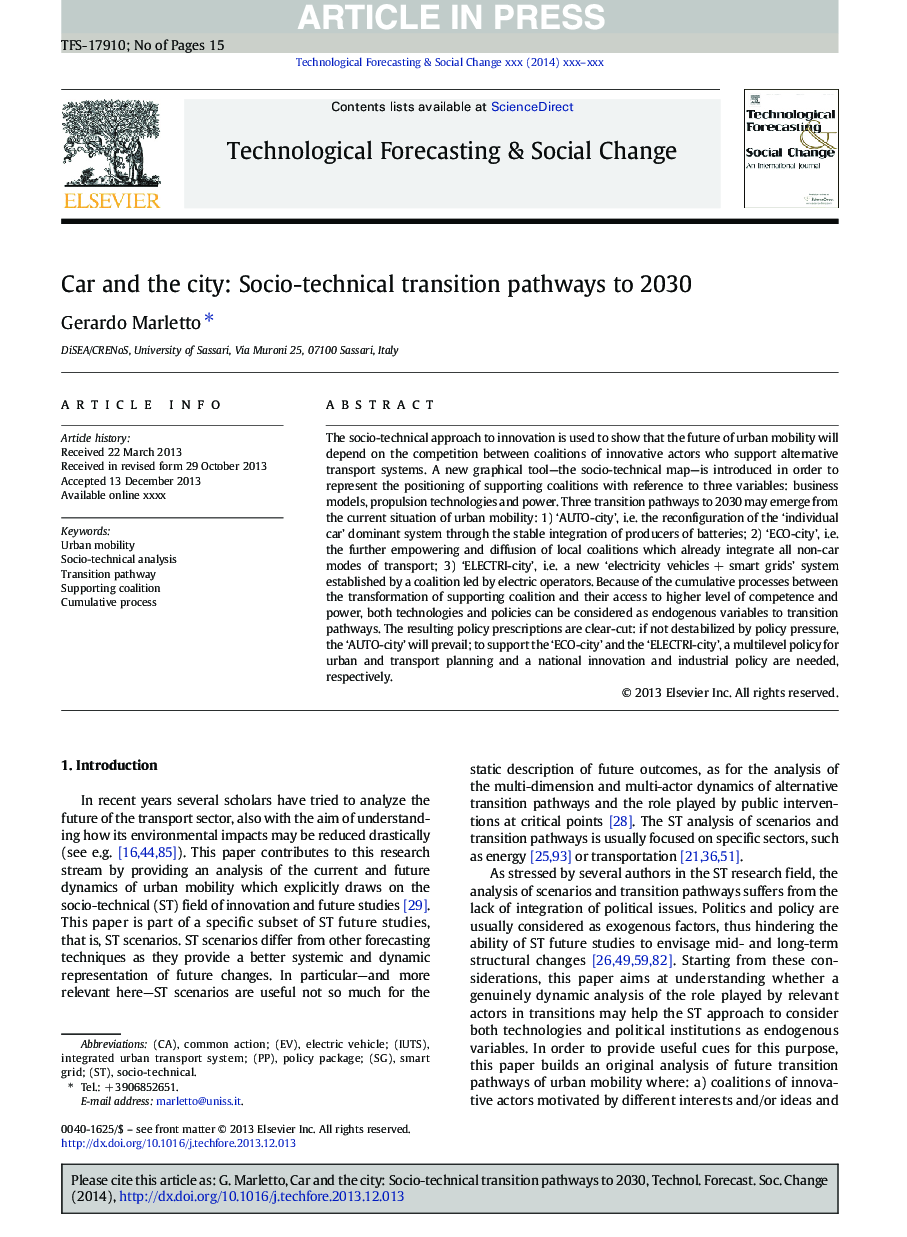| Article ID | Journal | Published Year | Pages | File Type |
|---|---|---|---|---|
| 7257183 | Technological Forecasting and Social Change | 2014 | 15 Pages |
Abstract
The socio-technical approach to innovation is used to show that the future of urban mobility will depend on the competition between coalitions of innovative actors who support alternative transport systems. A new graphical tool-the socio-technical map-is introduced in order to represent the positioning of supporting coalitions with reference to three variables: business models, propulsion technologies and power. Three transition pathways to 2030 may emerge from the current situation of urban mobility: 1) 'AUTO-city', i.e. the reconfiguration of the 'individual car' dominant system through the stable integration of producers of batteries; 2) 'ECO-city', i.e. the further empowering and diffusion of local coalitions which already integrate all non-car modes of transport; 3) 'ELECTRI-city', i.e. a new 'electricity vehicles + smart grids' system established by a coalition led by electric operators. Because of the cumulative processes between the transformation of supporting coalition and their access to higher level of competence and power, both technologies and policies can be considered as endogenous variables to transition pathways. The resulting policy prescriptions are clear-cut: if not destabilized by policy pressure, the 'AUTO-city' will prevail; to support the 'ECO-city' and the 'ELECTRI-city', a multilevel policy for urban and transport planning and a national innovation and industrial policy are needed, respectively.
Keywords
Related Topics
Social Sciences and Humanities
Business, Management and Accounting
Business and International Management
Authors
Gerardo Marletto,
